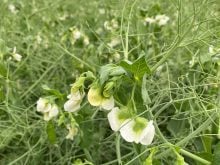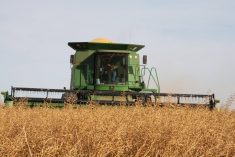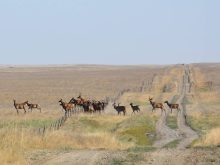Only five or six types of grain have been formally acknowledged as acceptable, but the list has been informally extended
It is an understatement to say that tax time is stressful.
But farmers have a unique opportunity when it comes to claiming their farm income that can help lessen this stress.
Compared to other industries, farmers report their income on a cash basis.
According to BDO’s Tax Planning for Canadian Farmers, “farmers only have to report the actual cash receipts from the sale of farm products in their taxable income.” On an accrual basis, other industries have to report sales for which they have not been paid yet, says the report.
Read Also

Crop quality looks good this year across Prairies
Crop quality looks real good this year, with the exception of durum.
This means “a lot less flexibility as far as what farmers can do,” says Darcy Kendall, chartered professional accountant with The Retiring Farmer.
“Because it is cash basis, they do have that ability to defer grain sales to next year. If they don’t receive the cash until next year, it’s not income until next year.”
Agriculture incomes depend on markets, and fluctuations in income can cause difficult years as well as with some successful years. With income deferral, farmers can level their income from year to year by claiming much of their commodities in low-revenue years, and deferring much of their income in high years to make that income available later.
High-income years can also put some farmers into a higher tax bracket, but with deferring income, that can be avoided.
However, farmers must plan how they are going to operate without those deferred incomes, so knowing their purchase cycles are also an extremely important part of the tax plan.
There are some limitations on the types of commodities that can be deferred. While only five or six types of grain have been formally acknowledged as acceptable for deferral, over the years that list has been informally extended, says Kendall.
So far the Canada Revenue Agency (CRA) hasn’t denied these deferrals but that doesn’t mean that farmers are completely safe from having their deferrals denied.
“It’s not something that Canada Revenue Agency has enforced but there is a risk that, at some point in time they choose to do so and people might be in for a surprise.”
Currently, there are no livestock deferrals available and Kendall does not see those coming into play any time soon, he says.
Another way farmers can defer their income is to purchase inventory in the current year that is intended for next year’s crop, says Kendall.
There is a certain level of risk with the formal deferring process, he says, since deferring income relies on strong grain sellers. So far, it hasn’t been a common issue, but there have been times when smaller grain companies have closed down without some farmers receiving their money.
“If you aren’t dealing with big names, I’d say the risk would be significantly higher.”
While there is no limit or minimum to how much a farmer defers, what and how much they defer does depend heavily on the farmer’s financial situation.
For Kendall, he asks his clients about lifestyle, cash flow, and how much they need.
Tax goals can vary, he says, depending on where the farmer would sit within the tax brackets.
If the goal is top of the low-tax bracket, Kendall says they can defer income into the next year to keep them within that desired bracket. Keeping them in the low end of a higher bracket involves the same process.
“Typically, we’ve got some thresholds we would look at depending on their specific situation.”
For farmers who are becoming more and more profitable, incorporation is always an option, says Kendall, since farm income can be taxed at a lower rate while the individual farmer can choose what personal income he wants to draw from his corporation. For farmers who have the option to incorporate, Kendall says that is the “ultimate deferral mechanism” because it provides the freedom to manage the business as it should and not around tax reasons.
Like all tax benefits, continued planning is going to be important to balance the wind-up years, when farmers have a significant amount of income built up and staying in a lower tax bracket becomes difficult.
Old Age Security is considered income, so if a combination of OAS and other income is going to trigger clawbacks where repayments are needed by the farmer, deferred income can help control those potential problems, says Kendall, but farmers must plan for those increases.
No matter what challenges and benefits come from income tax deferrals, farmers must have a solid plan to make the most out of this opportunity.

















